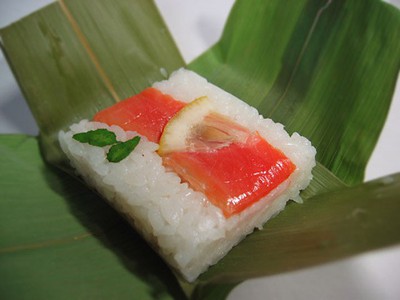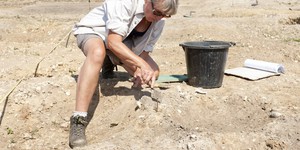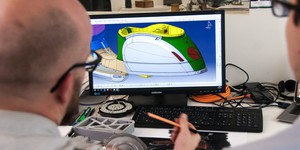Summary

If you want a Project Idea with full instructions, please pick one without an asterisk (*) at the end of the title.
Abstract
Did you know that people eat with their eyes as well as with their mouths? Food presentation—also called plating techniques or garnishing—makes food appear more appetizing. Checking out how the food looks is the cook's last task and the diner's first. Food that is well-presented is beautiful, colorful, and captivating. Not only does it make the diner really want to eat, but good presentation also allows the diner to identify the food ingredients, their quality, and the technique used in preparation. Poor presentation, such as off-colors, or an overcrowded plate, might make a diner not want to eat the food. Many cultures, like the Japanese, have turned food presentation into a high art, creating a "feast for the eyes," inspired by nature. The Japanese even have a special word for the rules of food presentation—moritsuke. Image Credit: wikipediea / Creative Commons Attribution ShareAlike 3.0
Image Credit: wikipediea / Creative Commons Attribution ShareAlike 3.0
Figure 1. This photo shows an example of Japanese food presentation. (Wikimedia, 2006.)
In this cooking and food science project, you will explore different food presentation techniques to determine which ones make food appear the most appetizing to your volunteers. You can choose to test one or more presentation methods, including the following:
- Number: Do odd numbers make food more appealing than even numbers? For example, if you are making a salad and you garnish it with five olives (an odd number), does that make the salad appear more attractive than when it is garnished with four (an even number)? Or, if you are serving a meal of stuffed mushrooms or shrimp, do your volunteers think putting five pieces (an odd number) on the plate looks better than six (an even number)?
- Plate or Bowl Size: For a given volume of food, what plate or bowl size looks best to your volunteers?
- Plate or Bowl Color: Does a white serving bowl or plate make the food "pop" visually? Is a patterned plate too distracting?
- Height: Do diners think a meal with a "third dimension" (some height to it) looks more appealing than the same meal without any height?
- Color: Is color essential to making a meal attractive? Blue is not a common color naturally found in foods. Do volunteers find blue unappetizing? Are complimentary colors (colors opposite each other on the color wheel) best?
- Texture: Which looks better to diners? A meal displaying a single texture, or one with a mix of textures, such as both smooth and crunchy foods?
You might also want to experiment with the shapes of food pieces, with sauces around the main dish, with layering or fanning of food pieces, or with the placement of starch, carbohydrate, and protein on a plate (if you are presenting a full meal).
To conduct this science fair project, you will first need to choose which food-presentation techniques, like the ones described above, you want to test. Then you will need to prepare meals and present them in different ways, according to the techniques you have chosen. For example, if you are testing whether volunteers prefer the appearance of odd or even numbers on their plate, you will prepare one plate with an odd number of pieces, and another with an even number. You will try this for several different types of meals. After photographing your presentations in similar lighting, you will ask volunteers to tell you which photographs of different food presentations look the most appetizing to them. Read this article on sample size to determine how many volunteers you will need.
Bibliography
This source gives an overview and a history of food presentation:
- Answers Corporation. (2009). Presentation of Food. Retrieved January 14, 2009.
Ask an Expert
Careers
If you like this project, you might enjoy exploring these related careers:









